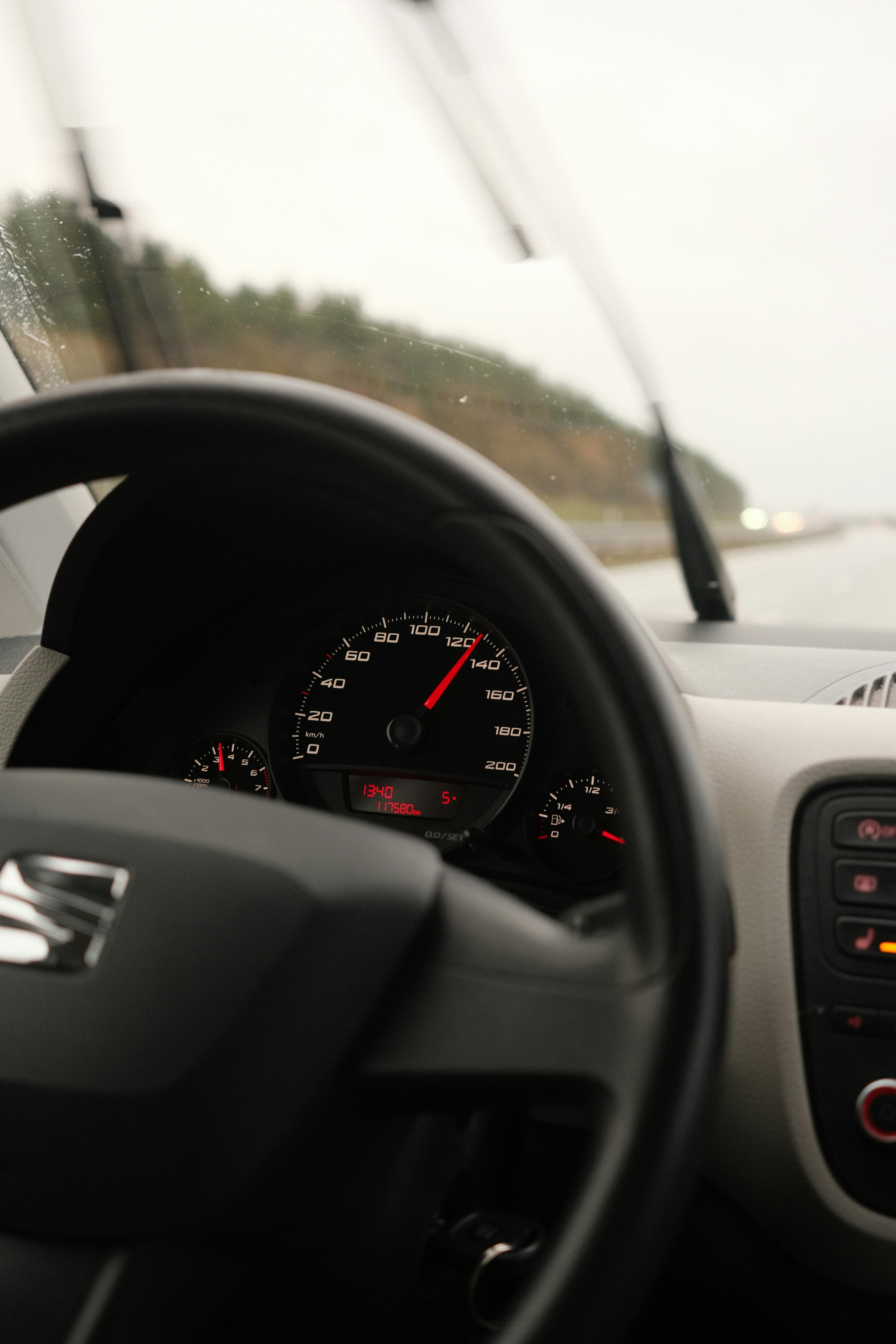Imagine being able to effortlessly glide on your skateboard, effortlessly transitioning from one trick to the next. Have you ever wondered what factors contribute to this seamless performance? Well, look no further because this article dives deep into the realm of skateboard wheel shape and profile, unveiling the crucial role they play in enhancing your skating experience. By understanding these intricate details, you’ll gain valuable insight that will ultimately improve your skills on the board. So, hop on and let’s roll into the fascinating world of skateboard wheels!

The Role of Skateboard Wheel Shape
Skateboard wheel shape plays a crucial role in determining the performance of your skateboard. Whether you’re cruising, performing tricks, or seeking speed and control, the shape of your wheels directly affects how your skateboard handles and behaves on different surfaces.
Cruising and Stability
When it comes to cruising, the shape of your skateboard wheels can significantly impact your overall experience. Round wheels are the most common and widely used shape for cruising. With a smooth and curved edge, round wheels offer excellent stability, making them ideal for long and relaxed rides. The rounded shape provides a larger contact patch with the ground, resulting in a smoother and more comfortable ride, especially on rough and uneven surfaces.
Trick Performance
For those who enjoy the exhilaration of performing tricks, the shape of your skateboard wheels is of utmost importance. Various wheel shapes cater to different trick styles, and choosing the right shape can enhance your overall performance. Squared-edge wheels are an excellent choice for those who favor slide tricks. The squared edge provides increased surface area for sliding, allowing you to execute tricks such as power slides and board slides with ease.
Speed and Control
If you’re a skater who seeks speed and control, the shape of your wheels can have a significant impact on your performance. Conical wheels are a popular choice among speed enthusiasts. Their unique shape, with a narrower surface at the top and a wider bottom, allows for increased acceleration and maneuverability. This shape facilitates quick turns and offers enhanced control, making conical wheels perfect for downhill racing and fast rides.
V-shaped wheels, on the other hand, prioritize control. With a sharp and pointed edge, these wheels provide excellent grip and stability during high-speed rides. The V-shape acts as a groove, keeping your skateboard securely on the road and preventing any potential wobbling or sliding out. These wheels are particularly suited for riders who prioritize stability and control during fast freeride sessions.
For skaters who prioritize grip, convex wheels are an ideal choice. With a convex or dome-shaped profile, these wheels have a larger edge contact with the ground, resulting in increased traction. This makes them perfect for riders who frequently skate on slippery surfaces or encounter challenging terrains.
Basic Skateboard Wheel Shapes
Understanding the different types of skateboard wheel shapes is essential in determining which shape is best suited to your skating style and preferences.
Round Wheels
Round wheels are the most traditional and commonly used shape among skateboarders. Their smooth, circular shape allows for excellent maneuverability and stability, making them ideal for cruising, commuting, and general skateboarding. Their versatility makes them a great choice for beginners and experienced skaters alike.
Squared-Edge Wheels
Squared-edge wheels have a straight edge instead of a rounded one. These wheels are specifically designed for specialized tricks that require controlled slides, such as power slides, board slides, and other technical maneuvers. The squared shape provides increased surface area, allowing for consistent and controlled sliding.
Conical Wheels
If you’re searching for versatility, conical wheels are an excellent choice. These wheels feature a tapered shape, wider at the bottom and narrower at the top. This design ensures faster acceleration, improved maneuverability, and quick turns. They are equally suitable for cruising and performing various tricks, making them a favorite among all-around skaters.
V-Shaped Wheels
V-shaped wheels are designed with a pointed or sharp edge that resembles the letter “V.” These wheels prioritize control and stability, making them perfect for high-speed rides and intense downhill sessions. The V-shape acts as a groove, allowing skaters to maintain their grip and stability even at high speeds.
Convex Wheels
Convex wheels have a dome or convex shape, where the center is higher than the outer edges of the wheel. This shape provides increased contact with the ground, resulting in better grip and traction. Convex wheels are particularly useful for skateboards used in slippery or difficult terrains, ensuring a secure and stable ride.
Factors Affecting Wheel Shape
Several factors influence the choice of skateboard wheel shape. Understanding these factors will help you make an informed decision about which shape is best suited to your needs.
Terrain
The type of terrain you plan to skate on greatly influences the ideal wheel shape. If you primarily skate on smooth surfaces and enjoy cruising, round or conical wheels may be your best bet. On the other hand, if you frequently encounter rough or uneven terrain, opting for wheels with a larger contact patch, such as round or convex wheels, will provide better stability and a smoother ride.
Style of Skating
The style of skating you prefer should also be considered when choosing the right wheel shape. For those who enjoy performing slide tricks and technical maneuvers, squared-edge wheels are recommended. If you’re an all-around skater who enjoys a mix of cruising and tricks, conical wheels offer the versatility you need. High-speed riders and downhill enthusiasts should opt for either V-shaped or convex wheels, depending on their priorities of control and grip.
Personal Preference
Ultimately, personal preference plays a significant role in choosing the right wheel shape. Each skater has their own style, comfort level, and goals. Experimenting with different wheel shapes can help you find the one that aligns with your preferences and enhances your skateboarding experience.
Advantages of Different Wheel Shapes
Each skateboard wheel shape offers its own set of advantages, suiting different skateboarding styles and preferences. Understanding these advantages will help you choose the right shape for your needs.
Round Wheels for Cruising
Round wheels are unrivaled when it comes to cruising and general skateboarding. Their smooth edges and larger contact patch provide excellent stability and maneuverability, making them perfect for relaxed rides and commuting. Round wheels also perform well on various terrains, making them a safe and reliable choice for skaters seeking a comfortable and enjoyable cruise.
Squared-Edge Wheels for Sliding
Squared-edge wheels are specifically designed for controlled slides and tricks that require smooth and consistent sliding. The straight edge of these wheels maximizes the surface area in contact with the ground during slides, ensuring a controlled and precise performance. If you’re a fan of power slides, board slides, or other slide tricks, squared-edge wheels are a must-have in your collection.
Conical Wheels for Versatility
Conical wheels strike a balance between cruising and performing tricks. With their tapered shape, these wheels offer increased acceleration, enhanced maneuverability, and quick turns. Conical wheels provide the best of both worlds, making them a versatile choice for skaters who enjoy a mix of cruising and technical tricks.
V-Shaped Wheels for Control
V-shaped wheels are designed for riders who prioritize control and stability, especially during high-speed rides. The sharp edge of these wheels acts as a groove, ensuring that your skateboard remains securely on the road and reducing the risk of wobbling or sliding out. If you’re a downhill racer or frequently ride at high speeds, V-shaped wheels offer the control and confidence you need.
Convex Wheels for Grip
When it comes to grip, convex wheels are unparalleled. Their dome shape provides a larger contact patch with the ground, resulting in increased traction and grip. If you often skate on slippery surfaces or challenging terrains, convex wheels offer the necessary stability and grip, ensuring a secure ride every time.

The Role of Skateboard Wheel Profile
While wheel shape is essential, the profile of your skateboard wheels also plays a crucial role in determining their performance. The wheel profile refers to various factors like contact patch, durometer, and core placement, all of which impact how the wheel interacts with the ground.
Contact Patch
The contact patch refers to the area of the wheel that comes into direct contact with the ground. The size of the contact patch significantly affects your skateboard’s grip, stability, and maneuverability. A wider contact patch provides increased stability and traction, ideal for riders seeking stability at high speeds or on rough terrains. In contrast, a narrower contact patch offers greater maneuverability and responsiveness, making it suitable for skaters who prioritize quick turns and tricks.
Durometer
The durometer of a wheel measures its hardness or softness. Durometer is typically measured on a scale ranging from 1A (extremely soft) to 100A (extremely hard). Softer wheels have more grip, making them suitable for riders who value traction and stability, especially on slippery surfaces. Harder wheels, on the other hand, provide less grip but are ideal for executing slide tricks, as they allow for quick and controlled sliding.
Core Placement
The placement of the core within the skateboard wheel affects its overall performance. Wheel cores can be either center-set, side-set, or offset. Center-set cores offer even wear and are popular among technical skaters and freestylers. Side-set cores provide quick acceleration and are favored by slide enthusiasts. Offset cores strike a balance between grip and slide, making them suitable for all-around skating styles.
Different Wheel Profiles and Their Effects
Choosing the right wheel profile is crucial in achieving your desired performance. Various wheel profiles offer different effects on grip, speed, and overall maneuverability.
Wide Contact Patch for Stability
Wheels with a wide contact patch are ideal for riders seeking maximum stability and grip. The increased surface area in contact with the ground ensures better traction, making them suitable for high-speed rides or rough terrains. Wide contact patch wheels are less prone to sliding out during turns and offer a smooth and stable ride, providing the utmost confidence in your skateboarding abilities.
Narrow Contact Patch for Maneuverability
Narrow contact patch wheels prioritize maneuverability and responsiveness. The reduced surface area in contact with the ground results in quicker turns and increased control during tricks. Skaters who value agility and the ability to execute tight turns will benefit from wheels with a narrow contact patch.
Soft Durometer for Grip
Softer durometer wheels excel in grip and traction. They conform to the surface, providing greater stability and control, particularly on slippery terrain. Skaters who prioritize grip, whether for carving, cruising, or downhill rides, should opt for wheels with a softer durometer.
Hard Durometer for Slide Tricks
On the other end of the durometer spectrum, harder wheels are designed for controlled sliding. These wheels offer less grip, allowing skaters to effortlessly execute slide tricks such as power slides and drifts. If you’re a fan of technical slides and tricks that involve controlled slipping, wheels with a harder durometer are your best bet.
Center-Set Core for Even Wear
Center-set cores are favored by many skateboarders due to their versatility and longevity. These cores are positioned in the center of the wheel, resulting in even wear over time. Center-set wheels are commonly used by freestylers and technical skaters who constantly rotate their wheels to ensure even wear on all sides.

Factors Affecting Wheel Profile
When considering the wheel profile, several factors come into play, including the skater’s weight, the terrain they ride on, and personal trick preferences.
Skater’s Weight
A skater’s weight directly affects how the wheels interact with the ground. Heavier skaters tend to put more pressure on their wheels, resulting in a larger contact patch and increased grip. Lighter skaters, on the other hand, may require wheels with a narrower contact patch to achieve the desired level of maneuverability and responsiveness.
Terrain
The terrain you plan to skate on is a crucial factor in determining your ideal wheel profile. Different terrains require different levels of grip and stability. If you primarily skate on smooth surfaces, like skateparks or well-paved roads, a narrower contact patch and harder durometer may be suitable for quick turns and tricks. For rougher terrain or surfaces with a lower level of traction, wider contact patches and softer durometers will provide the necessary stability and grip.
Trick Preference
Considering your personal trick preference is also vital when choosing the right wheel profile. If you enjoy sliding, opting for a wheel profile with a narrower contact patch and harder durometer will aid in executing slide tricks smoothly. If you’re more inclined towards technical tricks or freestyling, a center-set core and a durometer that strikes a balance between grip and slide will be most beneficial.
Combined Effects of Shape and Profile
The performance of your skateboard is greatly impacted by the combined effects of wheel shape and profile. Finding the right combination is essential for achieving optimal performance and enhancing your overall skateboarding experience.
Matching Wheel Shape and Profile
Matching the wheel shape and profile to your skating style, terrain, and trick preferences can significantly enhance your performance. For example, if you enjoy cruising on a variety of terrains, round wheels with a wider contact patch and a softer durometer will ensure stability and grip. If you’re a slide enthusiast seeking controlled slides, squared-edge wheels with a narrow contact patch and a harder durometer are more suitable. Experimenting with different combinations will help you find the perfect match for your unique needs.
Experimenting with Different Combinations
Skateboarding is a highly individualized sport, and what works for one skater may not work for another. It’s crucial to experiment with different combinations of wheel shape and profile to find what suits you best. Try different shapes, durometers, and core placements to understand how each combination affects your skating style and preferences. Keep in mind that preferences may evolve over time, so don’t be afraid to continue experimenting to continuously enhance your performance.
Choosing the Right Wheel Shape and Profile
Choosing the right wheel shape and profile requires careful consideration of your skating style, terrain, and personal preferences. Here are some steps to help you make an informed decision:
Consider Skating Style and Terrain
Evaluate your skating style and the terrains you frequently encounter. If you primarily enjoy cruising, consider round wheels with a wider contact patch for stability. If you’re a slide enthusiast, squared-edge wheels with a narrow contact patch will allow for controlled slides. Downhill enthusiasts may benefit from V-shaped or convex wheels for enhanced control, while those prioritizing grip can opt for convex wheels.
Consulting with Experienced Skaters
Seek advice from experienced skaters who have expertise in different wheel shapes and profiles. They can provide valuable insights based on their personal experiences and offer guidance tailored to your specific needs. Their knowledge and firsthand experience can help you make a more informed decision when choosing your ideal wheel shape and profile.
Testing and Personal Experience
Ultimately, the best way to determine the right wheel shape and profile is through testing and personal experience. Try out different combinations and pay attention to how they impact your performance. Experimenting with various shapes, durometers, and core placements will allow you to find the perfect match for your unique skating style and preferences.
Conclusion
Skateboard wheel shape and profile play a vital role in determining the performance of your skateboard. The shape and profile you choose can greatly impact your cruising experience, trick performance, speed, control, and overall level of grip. Understanding the different wheel shapes, profiles, and their advantages will help you make an informed decision based on your skating style, terrain, and personal preferences. Remember to experiment, seek guidance from experienced skaters, and test different combinations until you find the perfect match. By finding the right wheel shape and profile for your skateboard, you can enhance your performance, elevate your skateboarding skills, and make the most of your skateboarding journey.

